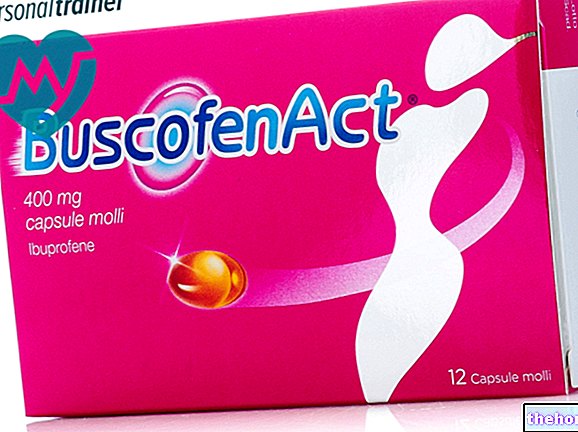Active ingredients: Torasemide
DIUREMID 10 mg tablets
DIUREMID 10 mg / 2 ml solution for injection
DIUREMID 200 mg / 20 ml solution for infusion
Indications Why is Diuremid used? What is it for?
DIUREMID contains torasemide and belongs to the class of diuretic drugs (i.e. drugs that increase the amount of urine passed). This medicine is used in adults to treat:
- Edema (fluid accumulation) of cardiac, hepatic (liver) and renal origin.
- Acute pulmonary edema (accumulation of fluid in the lungs).
- Ascites (accumulation of fluid in the abdomen)
- Congestive heart failure (inability of the heart to supply enough blood for the body's normal needs).
- Acute kidney failure (oliguria, ie decreased amount of urine eliminated), chronic kidney failure (long-term kidney failure), nephrotic syndrome (an "alteration in the kidneys that results in the" elimination of protein in the urine). The use of DIUREMID 200 mg / 20 ml solution for infusion is indicated only in patients with renal insufficiency in the non-anuric phase (renal failure not accompanied by complete inability to pass urine).
Talk to your doctor if you don't feel better or if you feel worse.
Contraindications When Diuremid should not be used
Do not take DIUREMID
- If you are allergic to the active substance, to sulfonylureas (a family of medicines used to treat diabetes) or to any of the other ingredients of this medicine
- If you suffer from renal failure in the anuric phase (kidney failure accompanied by inability to pass urine).
- In the pre-coma and hepatic coma.
- During pregnancy and breastfeeding (see "Pregnancy and breastfeeding").
Precautions for use What you need to know before taking Diuremid
Talk to your doctor or pharmacist before taking DIUREMID.
If you are being treated with DIUREMID or any other diuretic, particularly in the case of prolonged treatment, adequate monitoring of potassium (potassium concentration in the blood) should be performed. Similarly, your blood sugar (blood sugar levels), uricaemia (amount of uric acid in the blood), creatinine (creatinine levels in the blood), and lipidemia (amount of fat in the blood) should be monitored at regular intervals and when necessary. blood).
If you suffer from latent (not yet manifested) or already manifest diabetes mellitus, careful control of sugar metabolism is recommended, as an increase in blood glucose following treatment with torasemide cannot be excluded.
Before starting treatment with torasemide make sure that hypokalaemia (lack of potassium in the blood), hyponatremia (lack of sodium in the blood), hypovolaemia (decreased blood volume) and disturbances in urination (passing urine) have been resolved. .
For those who carry out sports activities
The use of the drug without therapeutic necessity constitutes doping and can in any case determine positive anti-doping tests.
Children
There are no data on the use of torasemide in pediatric age
Interactions Which drugs or foods may change the effect of Diuremid
Tell your doctor or pharmacist if you are taking, have recently taken or might take any other medicines.
The simultaneous use of DIUREMID with:
- Cardiac digitalis glycosides such as digoxin and digitoxin (drugs that stimulate the heart's activity) can cause alterations in the heart rhythm if there is a lack of potassium and / or magnesium (which can be caused by DIUREMID). simultaneous with DIUREMID and cardiac glycosides, your doctor may have you periodically check your potassium and magnesium levels in your blood.
- NSAIDs (Non Steroidal Anti-Inflammatory Drugs, such as indomethacin) may reduce the effect of torasemide.
- Laxatives (substances that stimulate intestinal motility and fecal emission), mineralocorticoids (substances that regulate the water and salt balance in the body) and glucocorticoids (important substances in glucose metabolism) can lead to an increase in their kaliuretic effect (increase excretion of potassium in the urine).
- Antihypertensive drugs (drugs that lower blood pressure) lead to an increased effect of the latter. If torasemide treatment is combined with an ACE inhibitor (drug used to treat hypertension), excessive blood pressure can occur.
- Antidiabetic drugs leads to a decrease in the effectiveness of the latter.
- Aminoglucoside antibiotics (e.g. kanamycin, gentamicin, tobramycin), cisplatin and cephalosporin preparations (antibiotic drugs), especially when high doses are taken, can lead to an enhancement of their harmful effects (ear and kidney toxicity).
- Lithium can lead to increased toxicity of lithium in the heart and neurons.
- Curare and theophylline (drug used in the therapy of numerous respiratory diseases) can lead to an enhancement of their muscle relaxant action (reduction of muscle tone).
- Salicylates (anti-inflammatory drugs derived from acetyl salicylic acid) in high doses, can lead to an increase in the toxicity of the latter.
- Pressor agents (substances that increase pressure such as epinephrine, norepinephrine) can lead to decreased responses of the arteries to them.
- Cholestyramine (drug that reduces cholesterol levels in the blood) reduces the bioavailability or the amount of drug that reaches the organ on which it must act and this consequently causes a reduction in the effectiveness of torasemide.
DIUREMID with alcohol
If you are taking this medicine, you will need to be careful when driving or operating machinery when the medicine is taken at the same time as alcohol (see "Driving and using machines").
Warnings It is important to know that:
Pregnancy and breastfeeding
You must not take DIUREMID during pregnancy and breastfeeding (see "Do not take DIUREMID").
Driving and using machines
Torasemide, even when used correctly, can affect the ability to react. Therefore, if you are taking this medicine, you will need to be careful when driving or operating machinery, especially in the first few days of treatment or when the medicine is taken at the same time as alcohol (see "DIUREMID with alcohol").
DIUREMID 10 mg tablets contain lactose
If you have been told by your doctor that you have an intolerance to some sugars, contact your doctor before taking this medicinal product.
Dose, Method and Time of Administration How to use Diuremid: Posology
Always take this medicine exactly as your doctor or pharmacist has told you. If in doubt, consult your doctor or pharmacist.
DIUREMID 10 mg tablets
The recommended dose can vary from half to a maximum of 2 tablets per day depending on the severity of the disease. Take the tablets with some liquid with a meal.
The tablet can be divided into equal parts.
DIUREMID 10 mg / 2 ml solution for injection
Unless otherwise prescribed, the use of 1 or 2 ampoules per day in a single administration into a vein is sufficient.
In case of acute clinical situations (with rapid onset of severe symptoms), for example in pulmonary edema, 2 ampoules can be administered as an initial dose. If necessary, this dose can be repeated after 30 minutes.
DIUREMID 200 mg / 20 ml solution for infusion
The 200 mg vials for infusion are indicated only in patients with renal insufficiency in the non-anuric phase (kidney failure not accompanied by total inability to pass urine).
Using a perfusor (medical device that allows the slow injection of a drug into a vein), 200 mg of torasemide (20 ml vial) can be administered as a slow intravenous infusion.
Further infusions should be given at 6-12 hour intervals depending on the diuresis. The maximum daily dose is 400 mg.
The infusion rate should not exceed 4 mg / min of torasemide (0.4 ml / min). If necessary the 200 mg DIUREMID vial can be diluted in 30 ml, 125 ml, 250 ml or 500 ml of solution saline, 5% glucose solution, 5% fructose solution or water for injections The resulting solution should be used immediately.
Overdose What to do if you have taken too much Diuremid
In case of overdose, marked diuresis with loss of fluids and electrolytes may occur. In this case, the concentrations of electrolytes in the blood must be restored (particles present inside the body, such as sodium, potassium, chlorine, etc.). There is no specific antidote to torasemide (ie a substance capable of neutralizing the action of torasemide).
If you have any further questions on the use of this medicine, ask your doctor or pharmacist.
Side Effects What are the side effects of Diuremid
Like all medicines, this medicine can cause side effects, although not everybody gets them.
In relation to the dosage and duration of treatment, disturbances in the hydro-electrolytic balance (ratio between mineral salts and water in our body) may occur, especially in the case of reduced salt intake. Especially at the beginning of treatment and if you are elderly, in case of high urine output, symptoms of electrolyte deficiency and reduced blood volume may occur, such as headache, dizziness, asthenia (lack of strength), loss of appetite and cramps, and in rare cases circulatory disturbances and thromboembolic complications (difficulty in blood circulation resulting in clot formation) due to haemoconcentration (increased blood concentration) These side effects disappear by adjusting the dosage to individual needs.
Occasionally the concentration of potassium in the blood may be reduced by treatment with torasemide at the recommended doses; Hypokalaemia may also occur with a low potassium diet, constant vomiting, profuse diarrhea and excessive use of laxatives (see "Warnings and precautions" and "Other medicines and DIUREMID").
Occasionally gastrointestinal disturbances such as nausea, vomiting, diarrhea and constipation may occur.
If you suffer from occlusion (closure or narrowing) of the urinary tract (eg due to prostatic hypertrophy) the increased production of urine can lead to its retention, thus causing dilation of the bladder.
In rare cases, treatment with torasemide could lead to a reversible decrease in the corpuscular elements of the blood (erythrocytes, leukocytes, platelets).
In isolated cases, increased azotemia (concentration of nitrogen in the blood), creatinine and gamma-GT (substances whose level in the blood may indicate a "liver abnormality), changes in blood glucose, metabolism have been reported. fat and increased uric acid levels.
Individual cases of allergic-type skin reactions such as itching or erythema may occur.
Reporting of side effects
If you get any side effects, talk to your doctor or pharmacist. This includes any possible side effects not listed in this leaflet. You can also report side effects directly via the national reporting system at: http://www.agenziafarmaco.gov.it/it/responsabili. By reporting side effects you can help provide more information on the safety of this medicine.
Expiry and Retention
Keep this medicine out of the sight and reach of children. This medicine does not require any special storage conditions. Do not use this medicine after the expiry date which is stated on the package after "EXP". The expiry date refers to the last day of that month.
Do not throw any medicines via wastewater or household waste. Ask your pharmacist how to throw away medicines you no longer use. This will help protect the environment.
Other Information
What DIUREMID contains
DIUREMID 10 mg tablets
1 divisible tablet contains:
Active ingredient: Torasemide 10 mg.
Other components: Lactose, corn starch, precipitated silica, magnesium stearate.
DIUREMID 10 mg / 2 ml solution for injection
1 vial contains:
Active ingredient: Torasemide 10 mg (equal to 10.631 mg of sodium salt).
Other components: Sodium hydroxide, trometamol, polyethylene glycol 400, water for injections
DIUREMID 200 mg / 20 ml solution for infusion
1 vial contains:
Active ingredient: Torasemide 200 mg (equal to 212.62 mg of sodium salt).
Other components: Sodium hydroxide, trometamol, polyethylene glycol 400, water for injections.
Description of the appearance of DIUREMID and contents of the pack
DIUREMID 10 mg tablets: white scored tablets for oral use - 14 tablets of 10 mg in blister packs.
DIUREMID 10 mg / 2 ml solution for injection: colorless solution for injection for intravenous use - 5 ampoules of 10 mg in 2 ml, of colorless glass.
DIUREMID 200 mg / 20 ml solution for infusion: colorless solution for intravenous infusion - 1 ampoule of 200 mg in 20 ml, of colorless glass.
Source Package Leaflet: AIFA (Italian Medicines Agency). Content published in January 2016. The information present may not be up-to-date.
To have access to the most up-to-date version, it is advisable to access the AIFA (Italian Medicines Agency) website. Disclaimer and useful information.
01.0 NAME OF THE MEDICINAL PRODUCT
DIUREMID
02.0 QUALITATIVE AND QUANTITATIVE COMPOSITION
Divisible tablets of 10 mg
1 tablet contains: torasemide 10 mg.
Excipient with known effect: lactose
10 mg ampoules in 2 ml
1 ampoule contains: torasemide 10 mg (equivalent to 10.631 mg of sodium salt).
200 mg vial in 20 ml
1 ampoule contains: torasemide 200 mg (equivalent to 212.62 mg of sodium salt).
For the full list of excipients, see section 6.1.
03.0 PHARMACEUTICAL FORM
White scored scored tablets for oral administration (the tablet can be divided into two equal doses).
Colorless solution for injection for slow intravenous use.
Colorless solution for slow intravenous infusion.
04.0 CLINICAL INFORMATION
04.1 Therapeutic indications
DIUREMID is indicated in adults in the case of edema of cardiac, hepatic and renal origin. Acute pulmonary edema. Ascites. Congestive heart failure. Acute renal failure (oliguria), chronic renal failure, nephrotic syndrome. The 200 mg vials for infusion are indicated only in patients with renal insufficiency in the non-anuric phase.
04.2 Posology and method of administration
10 mg tablets
From ½ to 2 tablets per day depending on the extent of the pathological picture. The tablets must be taken with a little liquid during meals.
10 mg ampoules
Unless otherwise prescribed by a doctor, the use of 1 or 2 ampoules per day in a single intravenous administration is sufficient.
In case of acute clinical situations (for example in pulmonary edema) 2 ampoules can be administered as an initial dose, if necessary this dose can be repeated after 30 minutes.
200 mg vials
The 200 mg vials for infusion are indicated only in patients with renal insufficiency in the non-anuric phase.
Torasemide 200 mg (20 ml vial) can be administered via the perfusor as a slow intravenous infusion.
Further infusions should be given at 6-12 hour intervals depending on the diuresis. The maximum daily dose is 400 mg.
The rate of infusion should not exceed 4 mg / min of torasemide (0.4 ml / min). If necessary the 200 mg DIUREMID vial can be diluted in 30, 125, 250 or 500 ml of saline, solution 5% glucose, 5% fructose solution or water for injections The resulting solution should be used immediately.
Pediatric population
The safety and efficacy of DIUREMID in children have not yet been established.
04.3 Contraindications
Hypersensitivity to the active substance, to sulfonylureas or to any of the excipients listed in section 6.1.
Torasemide should not be administered in cases of renal insufficiency in the anuric phase, in pre-coma and hepatic coma, during pregnancy and lactation (see section 4.6.)
04.4 Special warnings and appropriate precautions for use
As with all diuretics and particularly after prolonged treatment, careful monitoring of potassium levels should also be performed with torasemide. Similarly, blood glucose, uric acid, creatinine and lipid levels should be monitored at regular intervals and when necessary.
As an increase in blood glucose following treatment with torasemide cannot be excluded in individual cases, careful monitoring of carbohydrate metabolism is recommended in patients with latent or manifest diabetes mellitus.
Hypokalaemia, hyponatremia, hypovolaemia and urination disorders should be corrected prior to treatment with torasemide.
DIUREMID 10 mg divisible tablets contain lactose
Patients with rare hereditary problems of galactose intolerance, lactase deficiency, or glucose-galactose malabsorption should not take this medicine.
Pediatric population
There is no experience with the use of torasemide in pediatric age.
04.5 Interactions with other medicinal products and other forms of interaction
When used concomitantly with cardiac glycosides a deficiency of potassium and / or magnesium can increase the sensitivity of the myocardium to digitalis.
The kaliuretic effect of mineral- and glucocorticoids and laxatives may be enhanced. NSAIDs (eg indomethacin) may reduce the effect of torasemide.
The effect of antihypertensive drugs may be potentiated. If torasemide treatment is combined with an ACE inhibitor, excessive blood pressure may occur. The efficacy of antidiabetic drugs may be reduced.
Torasemide can potentiate the damaging effects (ototoxicity and renal toxicity) of aminoglucoside antibiotics (eg kanamycin, gentamicin, tobramycin), cisplatin and cephalosporin preparations especially at high therapeutic doses.
Torasemide can potentiate the cardio- and neurotoxic effect of lithium.
The muscle relaxant action of curare and theophylline can be enhanced.
Torasemide may decrease the arterial response to pressor agents (epinephrine, norepinephrine).
The toxicity of salicylates may be increased in patients receiving such drugs at high doses. The bioavailability and thus the efficacy of torasemide may be reduced by concomitant treatment with cholestyramine.
04.6 Pregnancy and breastfeeding
Do not use during pregnancy and lactation.
04.7 Effects on ability to drive and use machines
Torasemide, even when used correctly, can affect the ability to react. Therefore patients taking the drug will need to pay attention to driving or operating machinery, especially in the first few days of treatment or when the drug is taken at the same time as alcohol.
04.8 Undesirable effects
In relation to the dosage and duration of treatment, disturbances in the hydro-electrolyte balance may occur, especially in the case of reduced salt intake.
Especially at the beginning of treatment and in elderly patients, if diuresis is marked, symptoms of electrolyte deficiency and hypovolemia may occur, such as migraine, dizziness, asthenia, loss of appetite and cramps, and in rare cases circulatory disturbances and thromboembolic complications due to These side effects disappear by adjusting the dosage to individual needs.Gastrointestinal disturbances such as nausea, vomiting, diarrhea and constipation may occur occasionally.
Potassium metabolism is only occasionally affected by treatment with torasemide at recommended doses; Hypokalaemia can occur in case of a low potassium diet, continuous vomiting, profuse diarrhea and excessive use of laxatives. In patients with occlusion of the urinary tract (eg prostatic hypertrophy) the increased production of urine can lead to its retention, thereby causing bladder dilation.
In rare cases, treatment with torasemide may cause a reversible decrease in the corpuscular elements of the blood (erythrocytes, leukocytes, platelets).
Increases in blood urea nitrogen, creatinine and gamma-GT, changes in blood glucose, lipid metabolism and increased uric acid levels have been reported in isolated cases.
Individual cases of allergic-type skin reactions such as itching or erythema may occur.
Reporting of suspected adverse reactions
Reporting of suspected adverse reactions occurring after authorization of the medicinal product is important as it allows continuous monitoring of the benefit / risk balance of the medicinal product. Healthcare professionals are asked to report any suspected adverse reactions via the national reporting system. "address: www.agenziadelfarmaco.gov.it/it/responsabili
04.9 Overdose
In the event of an overdose, marked diuresis with loss of fluids and electrolytes may occur. In this case the hydroelectrolytic panel will have to be corrected.
There is no specific antidote to torasemide.
05.0 PHARMACOLOGICAL PROPERTIES
05.1 Pharmacodynamic properties
Pharmacotherapeutic group: diuretics with major diuretic action; sulfonamides, not associated.
ATC code: C03CA04.
DIUREMID exerts a diuretic and saluretic action which is established by inhibiting the renal reabsorption of sodium and chlorine in the ascending branch of the loop of Henle. The elimination of potassium is generally minimal and in relation to the urinary volume. In this way DIUREMID causes a gradual disappearance of the edema, whether of hepatic, renal or cardiac origin, and an improvement in the working conditions of the heart in case of heart failure, reducing both preload and afterload.
After oral administration the onset of activity occurs within the first hour with maximum effect within 2-3 hours and lasting up to 12 hours.
After intravenous administration the onset of diuretic action occurs within a few minutes with maximum activity within the first hour and lasting up to 12 hours (24 hours in patients with impaired renal function undergoing infusion with 200 mg ampoules).
The rapid onset of action after intravenous administration is useful not only in case of acute pulmonary edema, but also when it is necessary to intervene quickly to unblock diuresis, as in acute renal failure, or to increase it considerably, as in the presence of severe ascites.
05.2 Pharmacokinetic properties
Absorption
Torasemide is rapidly and almost completely absorbed after oral administration; the peak plasma concentration is reached after 1-2 hours and the absolute bioavailability is about 80-90%.
Distribution
Over 99% of torasemide is bound to plasma proteins with an apparent volume of distribution of approximately 16 liters.
Elimination
In healthy subjects, the terminal half-life of torasemide and its three metabolites (M1, M & SUP3; and M5) is 3-4 hours. The total clearance of torasemide is 40 ml / min and the renal clearance approximately 10 ml / min. .
Approximately 80% of the administered dose is eliminated via the kidney as torasemide (24%) and its metabolites (12%, 3% and 41% respectively).
Pharmacodynamic behavior is not modified and the duration of action is not influenced by the severity of renal insufficiency.
05.3 Preclinical safety data
Acute toxicity
Acute toxicity data demonstrate very low toxicity.
Subchronic / chronic toxicity
The alterations found in the various toxicological studies in dogs and rats at high doses are attributable to pharmacological activity (diuresis). The dosage used in animal experiments was considerably higher than the therapeutic active dosage.
Were observed: decreased body weight, increased creatinine and urea and renal alterations such as tubular dilation and interstitial nephritis.
All reported drug-related changes were reversible.
Reproduction studies did not provide evidence of peri- and postnatal teratogenic toxicity or substance-specific effects on fertility.
Mutagenicity tests performed excluded a mutagenic potential.
Carcinogenicity studies in rats and mice did not reveal any carcinogenic effects of torasemide.
06.0 PHARMACEUTICAL INFORMATION
06.1 Excipients
10 mg tablets
Lactose, corn starch, precipitated silica, magnesium stearate.
10 mg ampoules in 2 ml
Sodium hydroxide, trometamol, polyethylene glycol 400, water for injections q.s. to 2 ml
200 mg vials in 20 ml
Sodium hydroxide, trometamol, polyethylene glycol 400, water for injections q.s. at 20 ml.
06.2 Incompatibility
Not relevant.
06.3 Period of validity
36 months.
06.4 Special precautions for storage
This medicine does not require any special storage conditions.
06.5 Nature of the immediate packaging and contents of the package
14 divisible tablets
The tablets are packed in PVC / Al blisters. The blisters are introduced, together with the package leaflet, in a lithographed cardboard box containing all the information needed to identify the characteristics of the product, the production lot and the expiry date.
5 ampoules 2 ml
2 ml colorless glass vials, hydrolytic class I (F. EUR.). The vials, housed in a plastic material box, are placed, together with the leaflet, in a lithographed cardboard box containing all the information needed to identify the characteristics of the product, the production lot and the expiry date.
1 vial 20 ml
20 ml colorless glass vial, hydrolytic class I (F. EUR.). The vial, housed in a plastic material box, is introduced, together with the leaflet, in a lithographed cardboard box containing all the information necessary to identify the characteristics of the product, the production lot and the expiry date.
06.6 Instructions for use and handling
No special instructions for disposal.
Unused medicine and wastes derived from this medicine must be disposed of in accordance with local regulations.
07.0 MARKETING AUTHORIZATION HOLDER
Menarini International Operations Luxembourg S.A. - 1, Avenue de la Gare, Luxembourg
Dealer for sale: Luso Farmaco Institute of Italy S.p.A. - Milanofiori - Road 6 - Building L - 20089 Rozzano (MI).
08.0 MARKETING AUTHORIZATION NUMBER
DIUREMID 10 mg tablets
A.I.C. 028721049
DIUREMID 10mg / 2ml solution for injection
A.I.C. 028721052
DIUREMID 200mg / 20ml solution for infusion
A.I.C. 028721064
09.0 DATE OF FIRST AUTHORIZATION OR RENEWAL OF THE AUTHORIZATION
Date of first authorization: June 16, 1993
Date of most recent renewal: June 15, 2008
10.0 DATE OF REVISION OF THE TEXT
December 2016























-nelle-carni-di-maiale.jpg)




